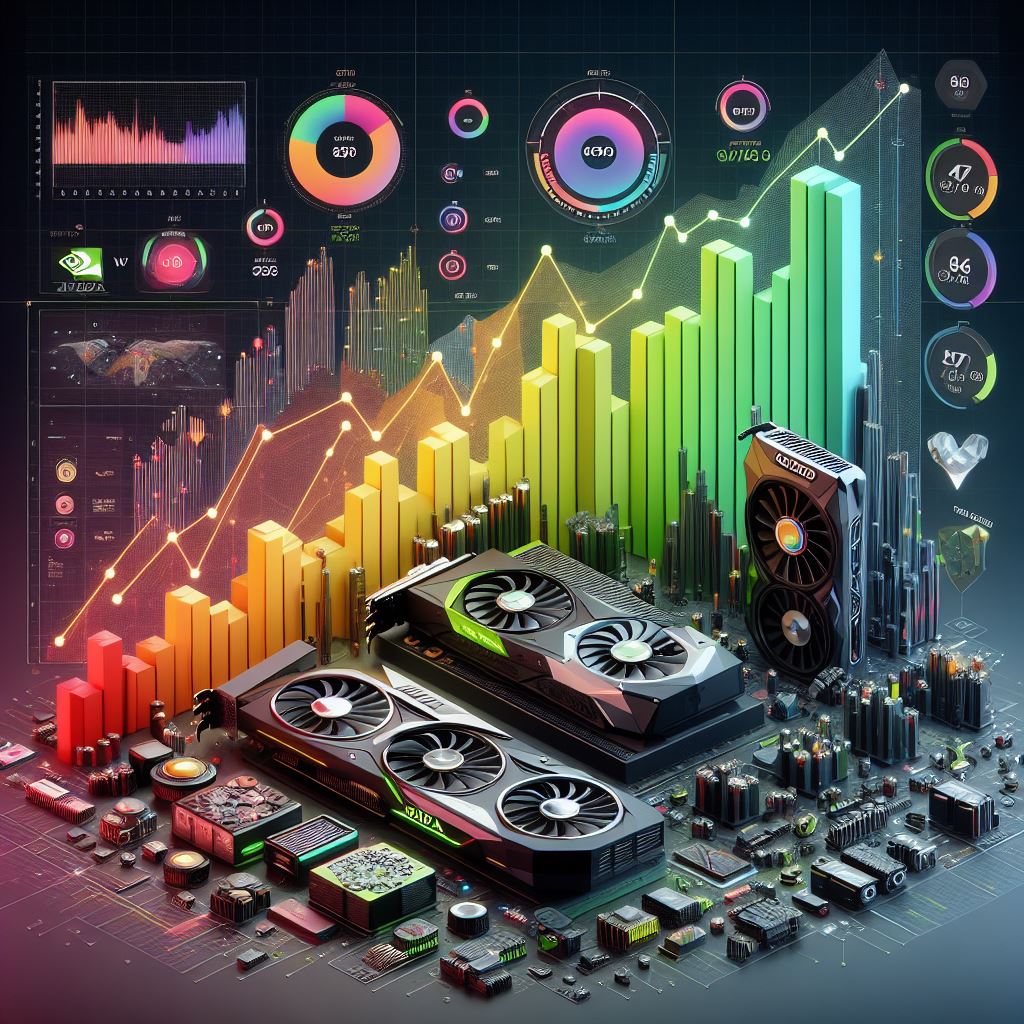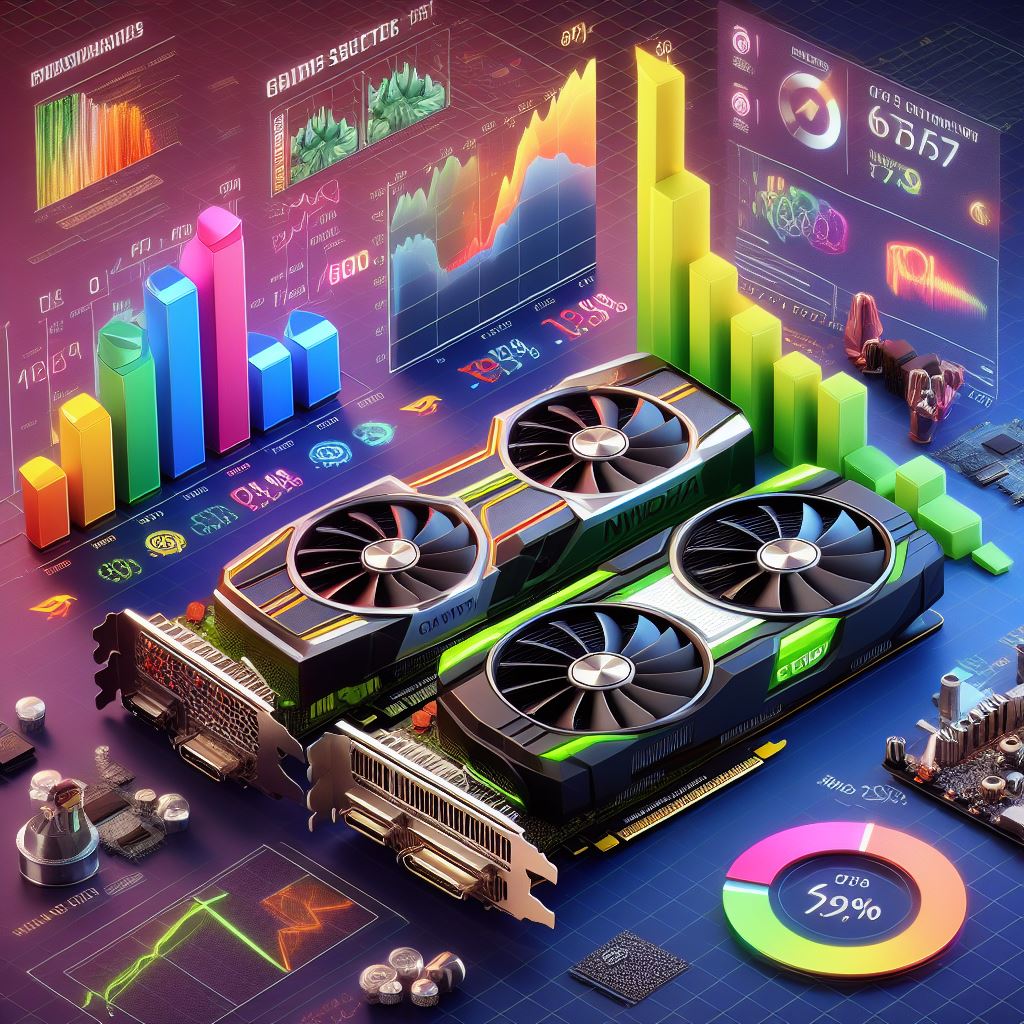Choosing the right graphics card isn’t about “Team Green” vs. “Team Red.” It’s about finding the perfect gaming fit. This guide will demystify the differences between NVIDIA and AMD cards, helping you choose based on your budget, performance, and gaming style. Let’s unlock the secrets of these two tech titans!

Understanding Your Gaming Style:
The first step in choosing the right graphics card is understanding how you game. Are you a casual adventurer, content with exploring vast landscapes at a steady pace? Or do you crave the adrenaline rush of competitive esports, demanding the highest frame rates and lightning-fast responsiveness?
Perhaps you’re a content creator, juggling high-resolution video editing and demanding games. Identifying your gaming profile will guide you towards the features and performance that matter most.
Budgeting for Graphics Glory:
Let’s be honest, budget matters. Graphics cards span a wide price range, catering to different performance levels. While high-end cards like the NVIDIA GeForce RTX 4090 boast incredible power for 4K and even 8K gaming, their price tag might not be for everyone.
For budget-conscious gamers, the AMD Radeon RX 6600 offers decent performance at a more wallet-friendly price. Knowing your budget helps narrow down your options and ensures you get the best bang for your buck.
Stay tuned for the next part of the guide, where we’ll delve deeper into the specific features and technologies offered by NVIDIA and AMD, and how they impact your gaming experience!
Unveiling the Champions: NVIDIA vs AMD
Gone are the days of simply choosing between “green” and “red.” Both NVIDIA and AMD have established themselves as powerhouses in the graphics card arena, each boasting unique strengths and specialties. Let’s delve into the DNA of each brand, exploring their key features and technologies to help you decide which team best suits your gaming needs.
Team Green: The Innovation Engine (NVIDIA):
- A Legacy of Performance: NVIDIA has a long-standing reputation for pushing the boundaries of graphics processing power. Their GeForce RTX series boasts cutting-edge features like real-time ray tracing, which delivers stunningly realistic lighting effects, and DLSS (Deep Learning Super Sampling), an AI-powered technology that boosts frame rates while maintaining image quality.
- The Driver’s Seat: NVIDIA is known for its consistent and well-optimized drivers, ensuring smooth performance and timely updates for their graphics cards. This translates to a better overall user experience and fewer compatibility issues.
- Content Creation Powerhouse: If you’re a streamer or video editor, NVIDIA cards excel in creative workflows thanks to their powerful encoding and decoding capabilities. Additionally, features like NVIDIA NVENC allow for efficient video encoding, saving you valuable time during the editing process.
Team Red: The Value Vanguard (AMD):
- Performance on a Budget: AMD has established itself as a strong contender in the mid-range and budget graphics card market. Their Radeon RX series offers impressive performance at competitive prices, making them a great option for gamers on a tighter budget.
- FidelityFX Super Resolution (FSR): AMD’s answer to DLSS, FSR is an open-source upscaling technology that can be used on a wider range of graphics cards, including those from NVIDIA. This makes it a more accessible option for gamers who want to boost frame rates without breaking the bank.
- Innovation on the Horizon: AMD is constantly pushing boundaries with its Radeon RX 7000 series, featuring the RDNA 3 architecture and promising improved performance and efficiency.
Remember, there’s no single “best” brand. Both NVIDIA and AMD offer compelling options depending on your gaming style, budget, and specific needs. The next section will dive deeper into performance comparisons and other crucial factors to help you make an informed decision.
Beyond the Hype: Unveiling the Performance Showdown (NVIDIA vs AMD)
Forget the simplified narrative of “one brand is always better.” The truth is, both NVIDIA and AMD excel in different areas, and their performance varies depending on specific games and resolutions. To navigate this complexity, we’ll dive into the data and explore real-world benchmarks to help you understand how each brand performs in various scenarios.
The Benchmark Battlefield:
Before we jump in, let’s address the elephant in the room: benchmarks. These are standardized tests that measure a graphics card’s performance in specific games or synthetic scenarios. While they’re not a perfect representation of real-world gaming, they offer a valuable baseline for comparison.
Frame Rate Frenzy:
When it comes to raw frame rates, NVIDIA often holds the edge in high-end cards. Their GeForce RTX 40 series boasts impressive performance, particularly in demanding titles at 4K and even 8K resolutions. However, it’s crucial to remember that not everyone needs the absolute top-tier performance. If you’re a casual gamer content with 1080p or 1440p gaming, mid-range cards from both AMD and NVIDIA can deliver smooth and enjoyable experiences.


Ray Tracing Revelation:
Ray tracing is a cutting-edge technology that simulates realistic lighting effects, adding a layer of immersive realism to games. NVIDIA currently has the upper hand in this area, with their RTX series cards offering dedicated hardware for ray tracing, resulting in better performance and visual fidelity. However, it’s important to note that ray tracing can be demanding and may require a significant performance hit, especially at higher resolutions.
The FSR Factor:
While NVIDIA might have the lead in ray tracing, AMD’s FSR technology is a compelling alternative for gamers seeking improved frame rates. This open-source upscaling technology can be used on a wider range of graphics cards, including those from NVIDIA, and offers a performance boost without sacrificing too much visual quality.
Beyond Performance: Exploring the Additional Factors (NVIDIA vs AMD)
Choosing a graphics card isn’t just about raw performance. Several other factors can influence your decision, and understanding them is crucial for making an informed and personalized choice. Let’s delve into some key considerations beyond benchmark numbers that might sway your decision towards Team Green or Team Red.
Power Consumption and Thermal Management:
Power consumption refers to the amount of electricity your graphics card uses, impacting your electricity bill. It also plays a role in heat generation, which can affect your system’s overall temperature and require efficient cooling solutions. Generally, NVIDIA cards tend to be slightly more power-hungry than their AMD counterparts, although this can vary depending on specific models.
Driver Support:
Well-optimized drivers are essential for smooth performance and stability. Both NVIDIA and AMD are known for providing regular driver updates, ensuring compatibility with new games and addressing potential issues. However, some users report slightly faster adoption and optimization with NVIDIA drivers in certain scenarios.
Upgradability and Futureproofing:
Futureproofing your graphics card means choosing one that can handle upcoming games and technologies. While it’s impossible to predict the future perfectly, consider factors like the card’s architecture, memory type (e.g., DDR6), and future game engine requirements. Both NVIDIA and AMD are constantly innovating, so staying updated on their latest advancements can help you make an informed decision.
Additional Considerations:
- FreeSync vs. G-Sync: These are technologies that combat screen tearing, a visual artifact that can occur during gameplay. NVIDIA utilizes G-Sync, which requires compatible monitors, while AMD champions the open-source FreeSync.
- Aftermarket Coolers: Some users prefer replacing the stock cooler with a third-party option for improved thermal performance and noise levels. Both NVIDIA and AMD cards offer various aftermarket cooler options.
- Pre-built PCs: Many pre-built PCs come with pre-installed graphics cards. If you’re considering this route, research the specific NVIDIA or AMD card included to ensure it aligns with your needs.
Remember, the “best” choice depends on your individual priorities and budget. By weighing the performance, power consumption, driver support, futureproofing potential, and other factors discussed above, you can confidently choose the graphics card that best suits your gaming needs and preferences.
The Verdict: Unveiling Your Ideal Graphics Card (NVIDIA vs AMD)
There’s no single “winner” in the NVIDIA vs. AMD battle. Both brands offer compelling options that cater to various gaming styles, budgets, and priorities. The key lies in understanding your individual needs and carefully evaluating the factors discussed throughout this guide.
Remember:
- Casual gamers prioritizing budget and 1080p/1440p gaming might find mid-range cards from both NVIDIA and AMD appealing.
- Competitive gamers seeking the highest frame rates might lean towards high-end NVIDIA cards, especially for 4K and 8K gaming.
- Content creators might favor NVIDIA cards due to their powerful encoding capabilities.
- Gamers on a budget might find AMD cards offer better value in the mid-range price segment.
- Consider factors beyond performance: power consumption, thermals, driver support, futureproofing, and compatibility with your monitor and system.


Here are some resources to help you on your journey:
- Online review websites: Read user reviews and comparisons of specific graphics card models.
- Benchmarking websites: Explore websites like https://www.userbenchmark.com/ or https://www.3dmark.com/ to compare performance benchmarks.
- Tech forums and communities: Engage in discussions with other gamers and tech enthusiasts to gather insights and recommendations.
Ultimately, the “best” graphics card is the one that perfectly aligns with your unique gaming needs and preferences. By carefully weighing the information presented here and conducting further research, you’ll be well-equipped to make an informed decision and unlock the ultimate gaming experience tailored to your style.
Happy gaming!